Spring processing of cherries and cherries from diseases and pests: when and how to spray trees
Obviously, you are looking for information on how to process cherries and / or sweet cherries in the spring against diseases and pests in order to protect your fruit trees and get a good and healthy harvest. You may need a step-by-step treatment schedule, schedule, and list of drugs (fungicides and insecticides).
Well, then we will try to clearly show and tell you when and how to spray cherry trees in early spring, before flowering, as well as after flowering and during the period of fruit growth.
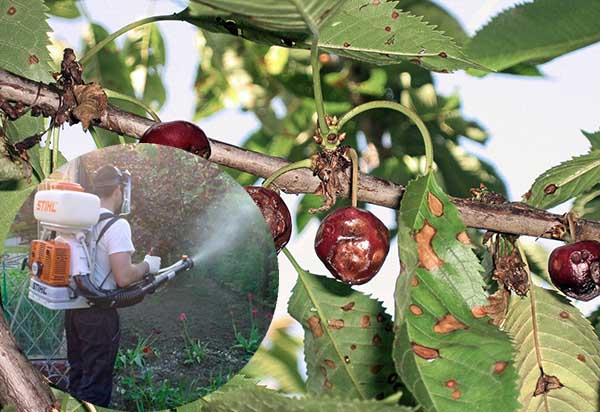
Content
Why do you need to process cherries (sweet cherries) in spring
With the arrival of spring, not only the plants themselves wake up, but also their pests and diseases (fungal spores).
Let's take a quick look at what kind of fungal diseases and insect pests we will fight and protect cherries during the spring treatments of the garden.
Diseases
Spring processing of cherries is carried out against the following fungal diseases:
- Coccomycosis - the most dangerous and widespread disease of cherries and cherries. It is characterized by the formation of reddish-brown spots on the leaves of cherry and sweet cherry, which is why the disease is sometimes called reddish-brown spot.
Advice! The site has a separate article about how to deal with coccomycosis of cherries (sweet cherries).
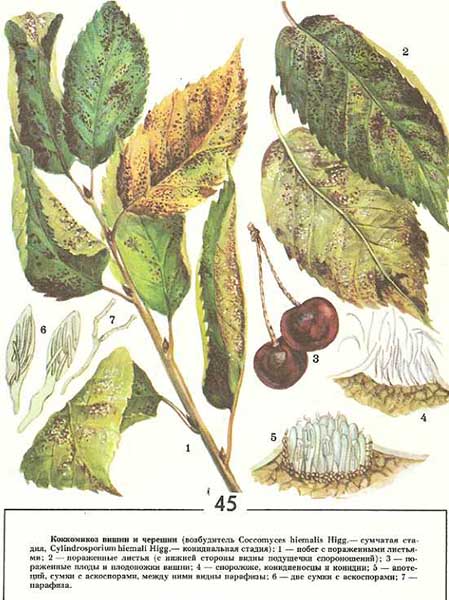
- Clasterosporium disease (perforated spot)... The second most popular disease of stone fruits.
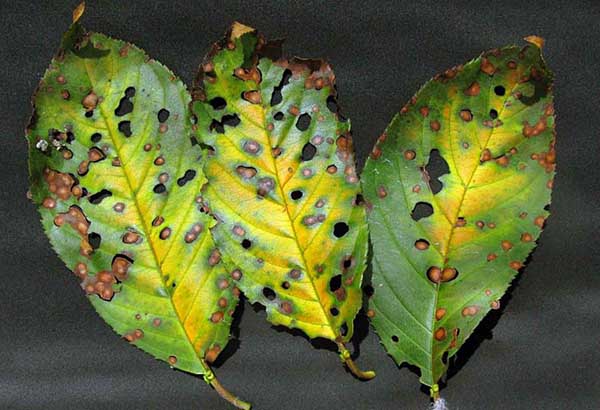
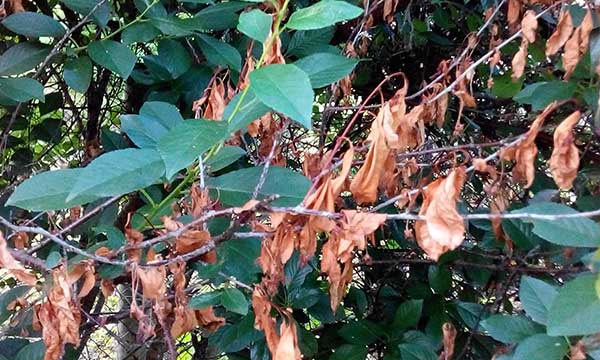
- In very rare cases, cherry trees strike scab, anthracnose and rust.
Pests
The most first treatment of cherries and cherries from pests is carried out against the following wintering stages of insect pests:
- copperheads,
- leaf rollers,
- aphids,
- ticks,
- scale insects,
- false shields and other sucking and leaf-eating pests.
Second and subsequent processing of cherries (sweet cherries) are already carried out against such pests as
- cherry weevil;
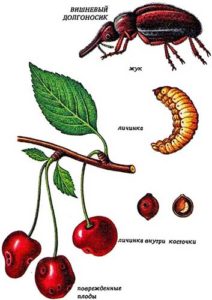
- cherry fly;
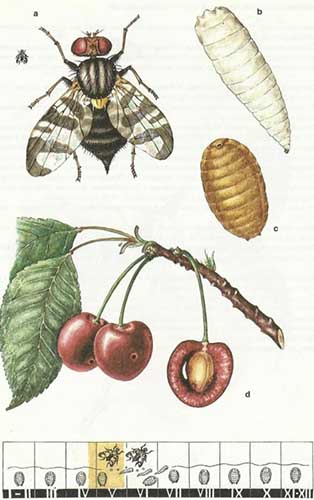
Video: cherry fly - signs and methods of struggle
- aphid;
As a rule, on cherries you can find cherry aphid (also called "black").
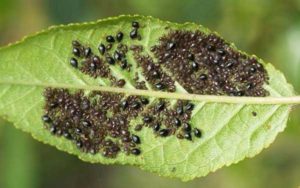
- spider mite. It requires special treatment acaricides... With a large number, it can greatly weaken the immunity of the plant.
- cherry moth;
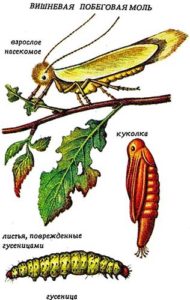
- cherry slimy sawfly;
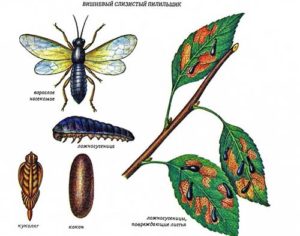
- hawthorn;
- leaf roll;
- moth other.
When to process cherries in spring: schedule and scheme of treatments
It is very important not to be late and to spend on time the first early spring processing of cherry trees (it is often called “eradicating”).
However! You should not rush too much, especially if there is still snow outside the window or the weather is unstable, and precipitation often occurs - rains, sleet, fog. Spraying at this time will be simply ineffective (for contact means).
When stable warm (+ 4..5 degrees during the day and not lower than 0 at night) and dry weather is established, the first processing of the garden will be possible.
Note! If you did not have time to do it back in the fall (but you should have), then late winter-early spring (February-early March) highly desirable to implementwhitewash of cherry trunks and low skeletal branches.
This treatment will protect your fruit trees from sunlight (ultraviolet) rays and sudden temperature changes in the winter-spring period, which will prevent cracks (frost cracks) from appearing on them, into which various infections (fungal spores) and pests can no longer get.
It is quite obvious that different diseases and pests appear at different times. Accordingly, for each phase of cherry development, there should be its own specificity of its processing. At the same time, it is very difficult to name specific dates, it is much easier and more correct to focus on the phases of development (vegetation) of a cherry tree in spring.
Typically, most gardeners use the following garden processing scheme in spring (depending on the stage of cherry or sweet cherry development):
- Before awakening or budding, sometimes this treatment is called "early spring eradication spraying"(Or by spraying on a" bare tree ").
By the way! Instead of processing on dormant buds, some gardeners spray on already started to swell (wake up) kidneys.
- "Along the green cone", when the buds have already swollen and burst, but the leaves have not yet appeared (unfolded).
- "By rosebuds" is sometimes called the "bud extension or separation" stage.
- During flowering.
Note! Processing is carried out exclusively against disease.
- After flowering, "along the pea-sized ovaries", in other words, after flowering, when small ovaries are formed.
- In the future (already in the summer), during the growth of fruits, it is also necessary to carry out preventive and therapeutic treatments (if you do not want to use chemical agents, then at least spray with biological preparations).
- In the fall (before or after leaf fall), it is necessary to carry out autumn eradication spraying.
By the way! The site has a separate article about how and how to treat trees and shrubs in the fall against diseases and pests.
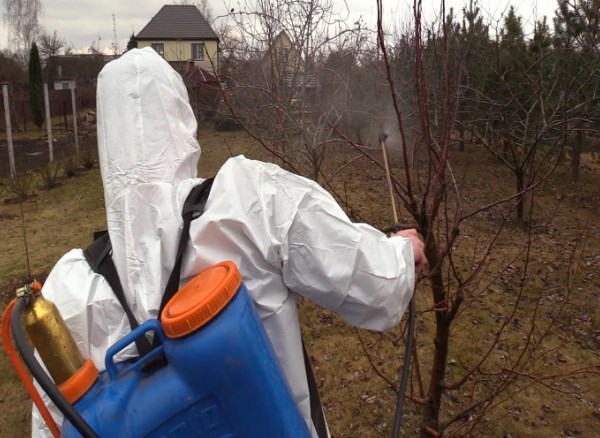
Video: spraying cherries in spring - processing scheme
Important! If it seems to you that it is unrealistic to carry out such a number of treatments, then this is not at all the case, even if you are at the dacha only on weekends (1-2 days a week). Each stage does not last one day, but about a week or more. In addition, you can track all stages on city trees.
Before the awakening of the kidneys or early spring spraying
For the first time, it is necessary to process cherries in the spring against diseases and pests. before bud breakwhen they are still asleep, and air temperature during the day it was stable at least +4 .. + 5 degrees.
The first spraying is often called "Eradicating" since this treatment allows you to get rid of most of the wintering stages of insect pests, as well as from the spores of some fungal diseases.
By the way! The site already has a separate article on how to conduct spring eradication garden spraying.
Green cone stage
The second processing of cherries in the spring from diseases and pests should be carried out during the period swelling and budding or in the "green cone" stage.
Interesting! This phase is characterized by the fact that the buds on the trees have already burst, but the leaves have not yet unfolded, although they are clearly visible (hence the "green cone").
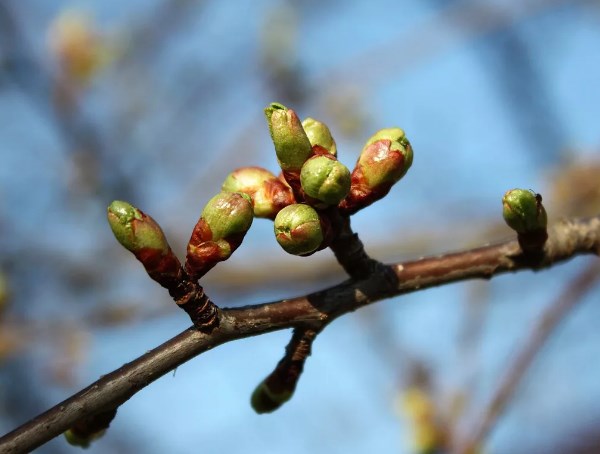
Important!If for some reason you did not carry out the processing at the previous stage, then it is better hurry up, because the the duration of this phase ("green cone") is relatively short... Moreover, if the weather is good, sunny, the temperature is stably above +10 degrees, then the kidneys will open very quickly.
At this stage, as a rule, use more serious means against major diseases and pests.
- So, against coccomycosis and klyasternosporiosis - Horus or Skor (or its full analogue Raek);
Important! Horus works great at low positive temperatures (+5, but up to +15), a Speed (or Rajok)on the contrary, it works better at higher temperatures (from +10 .. + 15)... Therefore, at the stages before the buds emerge and flowering (in the “green cone” phase), it is advisable to spray with Horus, and Skor - already at the “pink bud” stage, flowering and after flowering (“pea-sized ovaries”).
- Also against coccomycosis and clasterosporium disease contact fungicidal preparations can be used based on copper oxychloride, for example, Abiga-peak, Hom, Oxyhom (contact-system).
- Concerning treatments against peststhen it's time to start fighting weevils. For this, Aktara, Aktellik, Decis Profi or Decis Expert, Karate Zeon, Kinmiks, etc. are suitable. If the weather permits, then it is practical to start using biological products - Aktofit, etc.
However, this (pest control) can be done in the next stage. The fact is that at the “green cone” stage, spraying is usually carried out against diseases.
However, if you skipped the previous treatment (before the kidneys swell), then in the "green cone" stage it is still possible to spray the cherries bordeaux liquid or one of the solutions based on copper or ferrous sulfate with urea... And also you can apply against wintering stages of pests one of the special drugs - "Prophylactin" or "Drug 30 Plus".
By the way! Copper sulfate and Bordeaux liquid, which also contain copper (copper sulfate), also provide excellent protection against coccomycosis and clotterosporia.
At the same stage for additional protection of cherries from insect pests You can put on boles special trees trapping belts, build and hang on branches glue traps, pheromone houses.
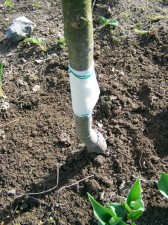
Note! Spraying in the "green cone" phase is considered one of the main periods for the treatment of cherries and other crops from diseases, as well as from pests. Processing is required.
The stage of protruding buds or in the phase of "rosebud"
The third stage of processing cherries in the spring from diseases and pests is carried out at the stage when bud already formed and advanced (it is pink), but has not yet opened.
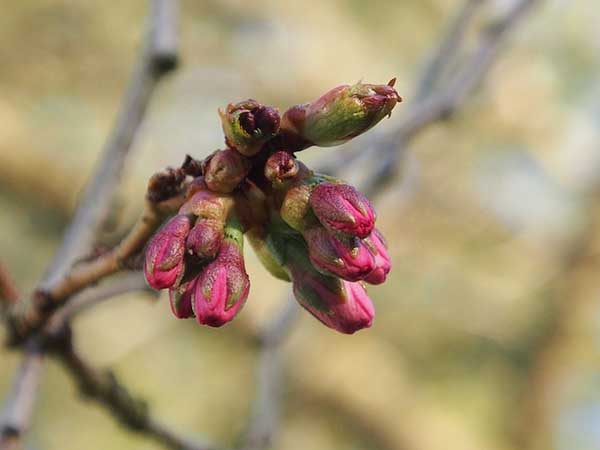
At this stage, spraying must be carried out against the following cherry diseases: clotterosporia, coccomycosis and moniliosis.
For processing, you can use such fungicides as Horus or even better Skor (Raek), Tilt (or Forecast), Topsin-M, Topaz.
You can also use fungicidal preparations copper oxide (Abiga-peak, Hom, Oxyhom).
As for pest control treatments for cherries, at this stage you need to protect them from cherry weevil, cherry fly, aphids, mites, moth (plum), cherry moth, cherry slimy sawfly.
You will not find the words "from a cherry fly" on any insecticide, so you can use the same preparations for its destruction as for the moth (plum).
For spraying cherries against the listed pests, the following insecticides can be used: Actellik, Prokleim, Fufanon-Nova, Aktara, Karate Zeon, Kinmiks, Decis Profi or Decis Expert, etc.
By the way! Temperature conditions in the rosebud stage tend to improve, weather it is warm and sunny (+ 10-15 degrees and above), which means you can start using biological drugs (see separate paragraph "Biologicals").
During flowering
During the flowering period, processing is carried out strictly against disease. Spraying it is impossible to carry out against pestssince can seriously harm (kill) bees and other pollinators.
Note! If you are late with the "rose bud" pest control, then it's okay - wait until the cherry blossoms and spray it. Just don't do this during flowering!
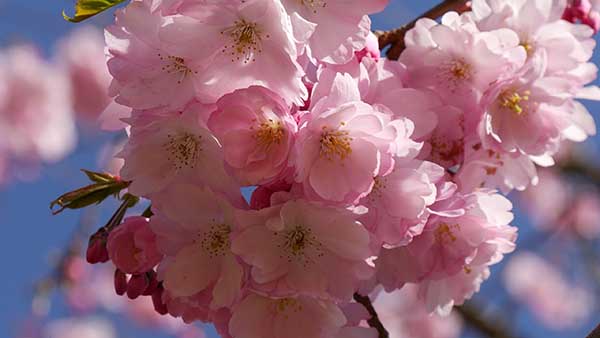
After flowering "on the ovary with a pea"
After flowering, when small ovaries are formed, it is necessary to produce complex treatment of cherry trees as against diseases (especially against moniliosis (monilial burn, monilial rot of fruits), as well as coccomycosis and clotterosporium disease)and against pests (cherry weevil, cherry fly, aphid, mites, moth, cherry moth, cherry slimy sawfly). In general, it is similar to the previous one ("by rosebuds").
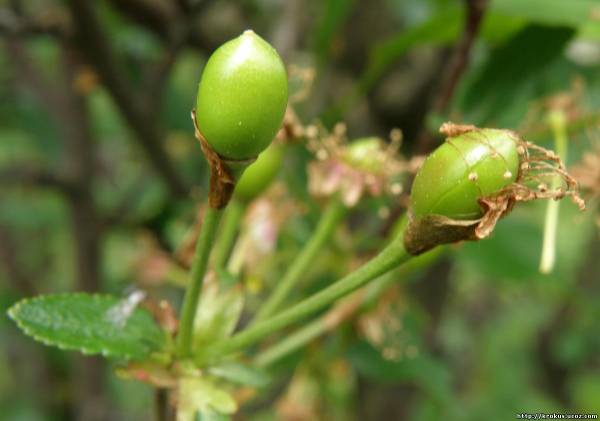
During the period of fruit growth
After some time, in industrial gardens, as a rule, 2-4 more treatments are carried out (after 10-14 days) during the period of fruit growth.
- Repeat working off of moth and ticks.
- Repeat the treatment for leaf spots - coccomycosis and clotterosporium disease, as well moniliosis and rust.
- Repeat the treatment for weevils and aphids.
- Repeat the treatment for leaf spots - coccomycosis and clasterosporium disease, as well as moniliosis and rust.
Important! When choosing a drug for treatment during this period, be sure to pay attention for the period of waiting until the fruit is removed.
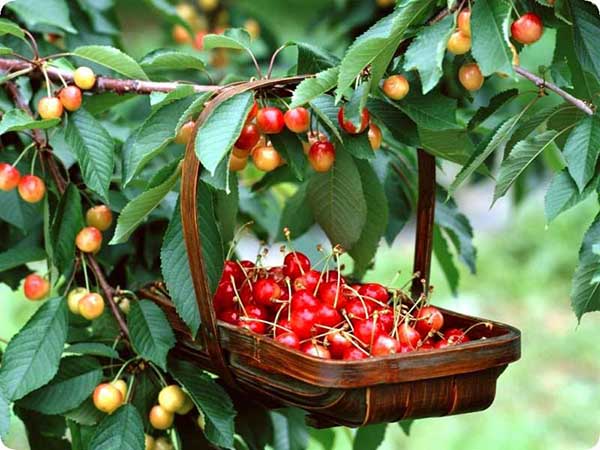
How to properly spray cherries (sweet cherries) in spring
It is very important to know the basic rules and recommendations for effective spring spraying of cherries against diseases and pests:
- While preparing solutions and spraying treesobserve safety precautions... If the packaging of the product says that you need to wear special clothes (dressing gown, overalls, raincoat), goggles and a respirator, rubber gloves, then you need to wear it.
- Spraying is desirable to carry out in the morning (after the dew has dried) or late at night (after sunset).
Too early processing will be ineffective due to dew not evaporated and high humidity.
- In this case, processing should be carried out only in dry and calm weather.
In sunny weather, it is better to refrain from spraying, since, quickly drying, the drugs become ineffective or do not work at all. Spraying is best done in cloudy, calm weather, but not in the rain: after the rain, the branches are damp, like a thin "film" of water on them. And spraying is droplets of solution that cover the plant with a thin "film" of drops in the same way. If processing is carried out, the concentration of the solution will decrease, and the processing efficiency will decrease.
- The first treatment ("eradicating") is always carried out exactly after spring cherry pruningto further protect the cut sites (ideal if you spray them copper sulfate or bordeaux liquid, in other words, if in the fungicide contains copper).
- All prepared solutions should be pass through a filter meshso as not to clog the sprayer.
- Suitable for dissolving almost all drugs room temperature water (for vitriol, it is advisable to use hot water, about + 40-50 degrees).
If you are using a biological productthen water better to take settled or filtered, i.e. chlorine free.
- At each stage, you can use like the same drugs (for the sake of economy) and new (wherein need to change active ingredient, so that there is no addiction - it will be more effective), or alternate (use alternately).
During each phase, you can carry out not 1, but 2 or more treatments, if it is indicated in the instructions for the preparation, especially after flowering.
- You can cook tank mixwho will possess insecticidal and fungicidal properties (it is imperative to clarify the compatibility of drugs).
However! Some agronomists believe that do not immediately give a double chemical load on the plant (another thing if you are using biologics). It is better to take a break for at least 1 day (for example, treat it with a fungicide on Saturday morning, and an insecticide on Sunday morning). You can also spray at intervals of 1 week, i.e. on one weekend they were treated for pests, on the next - for diseases (or vice versa).
Are chemicals dangerous, is it better to use biological products
Many gardeners have preconceived notionthat the use of chemicals will necessarily negatively affect the quality of the future harvest and human health. However, this does not correspond to reality, since upon expiry of the waiting period, all harmful substances (pesticides) withdrawn long before ripening and harvesting.
Important! Naturally, you must fully comply with the recommendations for their dosage and the timing of the spraying.
- Unlike biological products, chemical agents act much faster and more reliable.
- In addition, the use of chemicals is very often the only way to cure the culture from fungal diseases and get rid of annoying pests.
Whereas biological drugs and folk remedies have a more gentle effect, which is permissible only in the following cases:
- with a small number of pests;
- at the initial stage of development of a fungal disease or mild infection, and even better as a prophylaxis (protection), but not with an active struggle.
Specificity of processing young trees
Until the tree blooms and bears fruit, it is obvious that insects stick to it less. Therefore, it will be enough to process young cherry trees only 2-3 times:
- on sleeping kidneys - from diseases and hibernating pests;
- "Along the green cone" - against insect pests;
- after flowering - from diseases (especially against monilial burn).
How to process cherries in spring: preparations for diseases and pests
There are a large number of tools for the spring processing of the garden, so you need to familiarize yourself with their list in advance and choose the ones that are right for you (including the cost), and also decide when, how and in what quantity you will use them.
Important! The instructions for each drug always indicate when (in what time frame) and how many times they can and should be processed.
So, all means for spring cherry processing are divided into 3 groups:
- fungicides (drugs to fight diseases);
By the way! In this case, fungicides are divided into preparations protective (prophylactic) and curative action, and protective and healing (complex).
Of course, it is optimal to use complex preparations with protective and therapeutic effects.
Accordingly, if you noticed signs of illness, then no preventive (protective) means will help you, only healing (or protective-healing).
- insecticides (pest control agents);
There are also acaricides - means for fighting ticks. They are more often called insectoacaricidessince they destroy other pests as well.
- insectofungicides (complex preparations acting simultaneously against pests and diseases).
By origin, these agents (fungicides and insecticides) can be:
- chemical (those same "chemicals");
- biological (biological products).
Of course, there are also folk remedies, for example, various herbal solutions and infusions. But their effectiveness is very, very limited.
Chemical fungicides (remedies against diseases)
As for preparations suitable for spring spraying of cherries and cherries against diseases, the following can be used fungicides:
Important! For one treatment you only need to choose one drug (fungicide), and then use a new one (preferably with another active substance) or alternate.
- Bordeaux mixture (contact fungicide of protective action, 3% solution of Bordeaux liquid - before bud break and 1% - at the stage of "rose bud" - from coccomycosis, clasterosporium, moniliosis);
By the way! The site has a detailed article about the preparation and use of Bordeaux liquid.
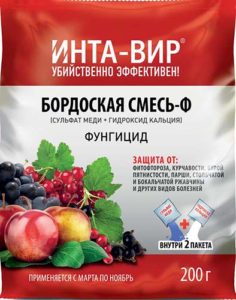
- Copper sulfate (contact fungicide of protective action, against coccomycosis, clasterosporium and moniliosis);
Advice! More details on the fields of application of copper sulfate readin this material.
- Inkstone (contact fungicide, from clasterosporium disease, moniliosis);
About, when, how and why to use iron vitriol, detailed in this article.
Usually, urea is used together with copper or iron vitriol, namely, the tank mixture is being prepared.
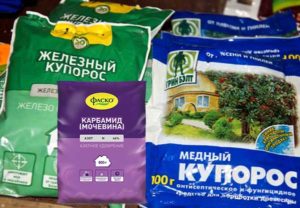
- Abiga peak (protective contact fungicide based copper oxychloride, against coccomycosis, clasterosporiosis, moniliosis);
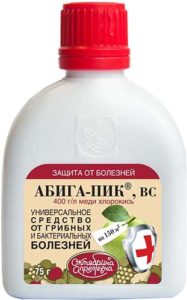
- Hom (contact fungicide protective actions based on copper oxychlorideagainst coccomycosis, clasterosporium disease, moniliosis);
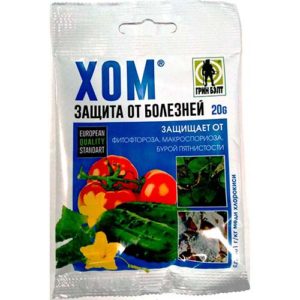
- Oxyhom (contact systemic fungicide protective actions based on copper oxychloride and oxadixyl, against coccomycosis, clasterosporium disease, moniliosis);
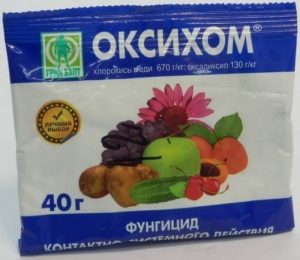
- Forecast (systemic fungicide protective and healing actions based onpropiconazole, against leaf spots, rust);
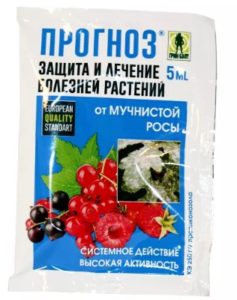
- Tilt (systemic fungicide protective and healing actions based onpropiconazole, against leaf spots, rust);
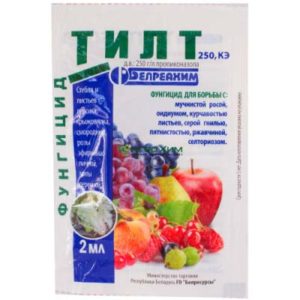
Tilt = Forecast.
- Topsin-M (systemic contact protective fungicide actions based onThiophanate methyl, against coccomycosis, moniliosis - fruit rot and monilial burn);
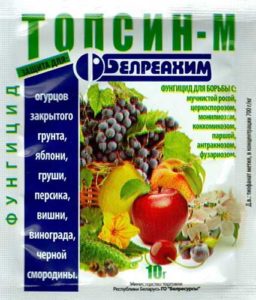
- Horus (systemic fungicide of protective and curative action based cyprodinil, against coccomycosis, clasterosporiosis, moniliosis - fruit rot and monilial burn);
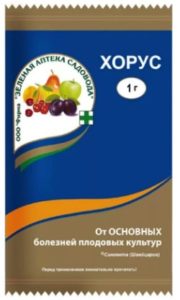
- Speed (systemic fungicide of protective and curative action based difenoconazole, against coccomycosis and clasterosporia);
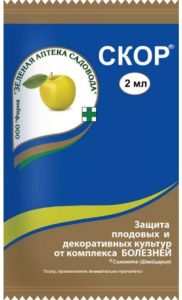
- Raek (systemic fungicide of protective and curative action based difenoconazole, against coccomycosis and klyasternosporiosis);
Speed = Rayok = Guardian.
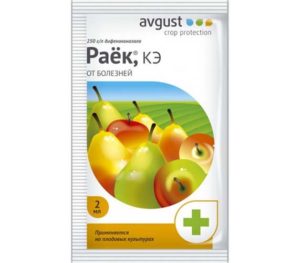
- The keeper (systemic fungicide of protective and curative action based difenoconazole, against coccomycosis and clasterosporium).
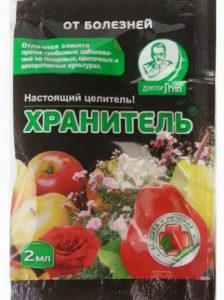
Advice! Carefully study the instructions: the scope of the drug (against what diseases), timing, dosage.
Chemical insecticides (pest control agents)
Regarding preparations suitable for spraying cherries and cherries in spring against pests, the following can be applied insecticides:
Important!For one treatment you only need to choose one drug (insecticide), and then use a new one (preferably with another active substance) or alternate.
- Prophylactin (Vaseline oil and Malathion (Karbofos) - enteric insecticide against wintering stages of pests - ticks, aphids, scale insects, leafworms, honeycorns, etc. perfectly handle on swelling buds, in early spring).
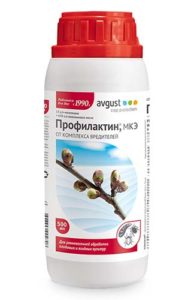
- Preparation 30 plus (Vaseline oil, contact insect-acaricide from the wintering stages of pests - scale insects, pseudo-scale insects, ticks, aphids, coppers, moths, worms; spray during dormancy - in early spring).
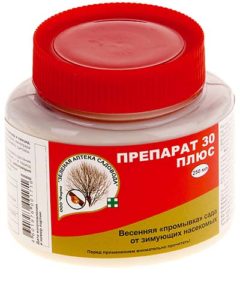
- Aktara (Thiamethoxam (Aktara), systemic insecticide of intestinal action, against weevils, aphids);
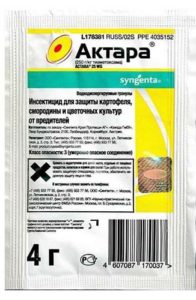
- Actellic (Pyrimifos-methyl (Actellic), systemic insectoacaricide of contact-intestinal action from aphids, weevils, cherry flies, ticks);
- Alatar (Malathion and Cypermethrin, intestinal insecticide, from moth, weevil, leafworm, cherry fly, aphid);
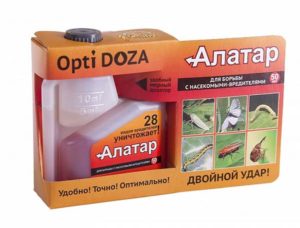
- Fufanon Nova (Malathion (Karbofos), enteric insectoacaricide from moth, weevil, cherry fly, leafworm, aphids, ticks);
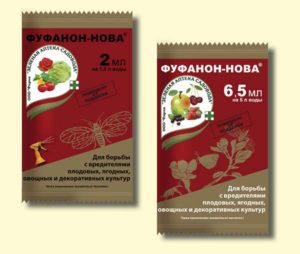
- Aliot (Malathion (Karbofos), enteric insectoacaricide from moth, weevil, cherry fly, leafworm, aphids, ticks);
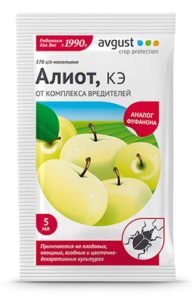
Fufanon and Aliot are complete analogues!
- Decis Profi (Deltamethrin,enteric insecticide, against moth, cherry fly, leafworm, aphids);
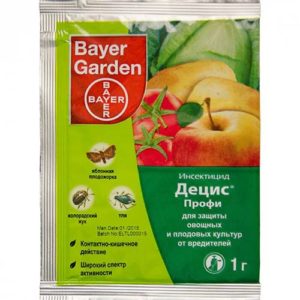
- Decis Expert (Deltamethrin, enteric insecticide, against moth, cherry fly, leafworm, aphids);
- Calypso (Tiacloprid, systemic insecticide of contact-intestinal action, against the moth, leafworm, cherry fly);
- Karate Zeon (Lambda Cyhalothrin,enteric insectoacaricide, against moth, cherry fly, leafworm, ticks, aphids);
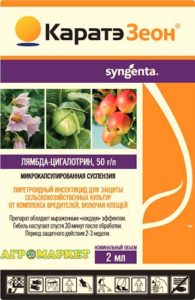
- Kinmix (Beta-cypermethrin, enteric insecticide against moth, cherry fly, weevil, aphid, leafworm);
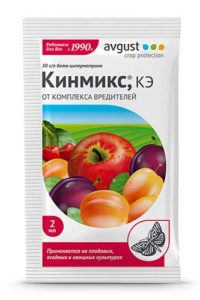
- Biotlin (Imidacloprid, systemic insecticide of contact-intestinal action, against aphids, cherry flies);
- Confidor Extra (Imidacloprid, systemic insecticide of contact-intestinal action, against aphids, cherry flies);
- Brand (Emamectin benzoate,insecticide of intestinal action from the moth, leafworm, cherry fly);
- Spark (Permethrin and Cypermethrin, insectoacaricide of intestinal action from moth, weevil, ticks, aphids, leaf rollers, cherry flies);
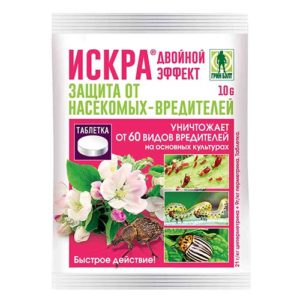
- And other broad spectrum insecticides.
Advice! Carefully study the instructions: the scope of the drug (against which pests), timing, dosage.
Insecto-fungo-stimulant
If you are a completely lazy summer resident, then for processing cherries and cherries, you can purchase the following tool ("Cherry and sweet cherry rescuer"), which is:
- insectoacaricide - effectively and instantly destroys pests (including ticks);
- fungicide - protects against most diseases;
- stimulant - an ecological growth stimulator.
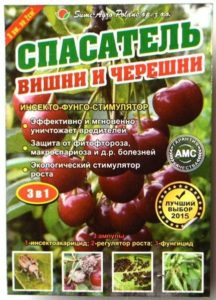
Biological products of fungicidal and insecticidal action
Among biological products, fungicides, insecticides, and insectofungicides can also be distinguished.
Note! As a rule, almost all biologics work effectively only under the condition of a sufficiently high positive air temperature (+ 10 ... + 15 degrees), so they begin to be used only at the stage of the "rosebud", while the first and second treatments you still have to carry out using chemicals.
Biologicals fungicidal action (against diseases):
- Fitolavin (fungicide, for moniliosis);
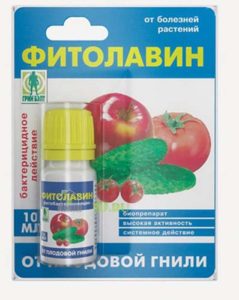
- Alirin-B (systemic contact fungicide of protective and curative action, against moniliosis, rust);
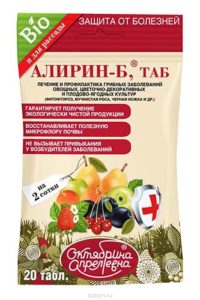
- Gamair (systemic contact fungicide of protective and curative action, against moniliosis, rust);
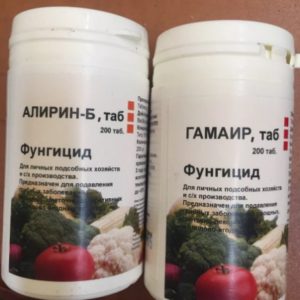
- Fitosporin (systemic fungicide, from coccomycosis, moniliosis, rust);
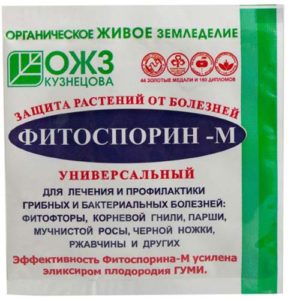
- Planriz (contact fungicide, from moniliosis, leaf spots);
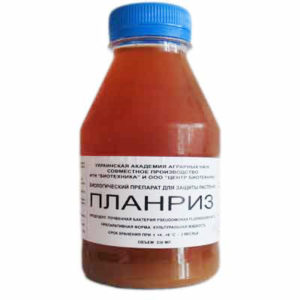
- Rizoplan (contact fungicide, from moniliosis, leaf spots);
- Trichodermin or Trichoderma (fungicide, from moniliosis, leaf spots);
The effectiveness of Trichodermina can be enhanced when used together with the biological product Planriz.
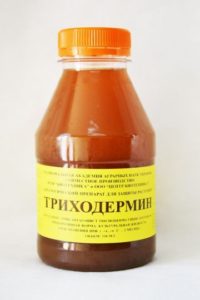
- Pentafag-C (fungicide, from leaf spots).
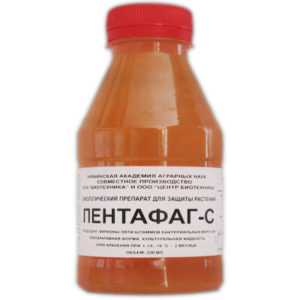
Biologicals insecticidal action (against pests):
- Aktofit (Aversectin C, insectoacaricide, from moths, ticks, aphids);
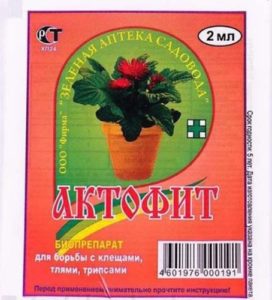
- Fitoverm (Aversectin C, insectoacaricide, from moth, leafworm, aphids, ticks);
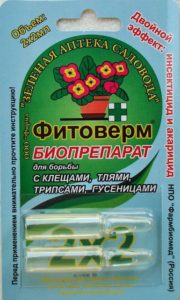
- Kleschevit (Aversectin C, insectoacaricide, from moth, leafworm, aphids, ticks);
Aktofit, phytoverm, mite is a complete analogue.
- Bitoxibacillin (insectoacaricide, from moth, leafworm, moth, hawthorn, tick);
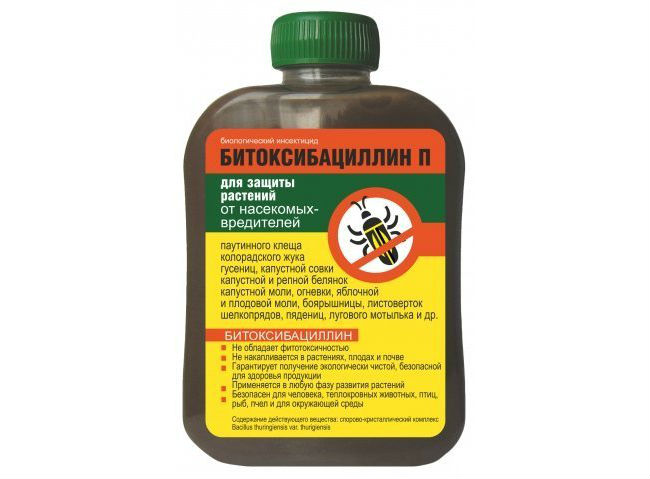
- Lepidocide (from moth, hawthorn, moth, leafworm);
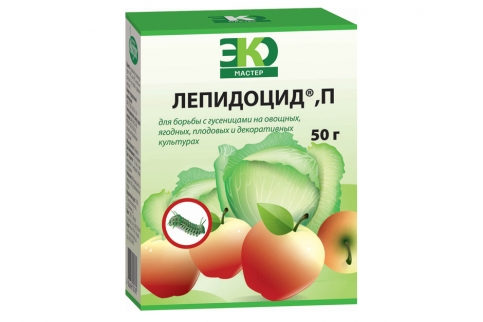
- Gaupsin (complex action insectofungicide, from moniliosis, leaf spots - coccomycosis and clotterosporia, moths, aphids, leafworms and other pests).
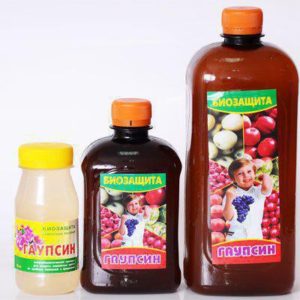
Note! Yes, biologics have their advantages (they are environmentally friendly, have a short wait time), but it must be admitted that they are not as effective as chemical fungicides.
Tank mixtures (fungicides + insecticides)
Note! Not all drugs can be mixed. For example, practically nothing can be mixed with bordeaux liquid (because she has an alkaline reaction).
The instructions should say what drugs they can be combined with.
For spring spraying of cherries, you can prepare the following tank mixtures (fungicide + insecticide):
Chemical:
- Horus (fungicide) + Decis Profi (insecticide);
At higher temperatures (+10 .. + 15 degrees)Chorus is better to replace with Speed.
- In principle, you can replace Decis Profi with Aktar: and process Aktara + Horus or Aktara + Speed;
Advice! After flowering, it is advisable to replace Aktar with Actellic.
- Speed (Horus) + Topaz + Aktara (Actellic);
- Speed (Horus) + Calypso;
- Skor (Horus) + Aktara (Aktellik) + Karate Zeon.
Biological:
By the way! Almost all biologics can be mixed. Moreover, by doing so you will enhance their effect.
- For example, you can use the following tank mixture for pests: Lepidocide + Bitoxibacillin + Gaupsin (insectofungicide).
- Against diseases: Planriz + Trichodermin + Pentafag-C + Rizoplan.
Folk remedies against pests
Folk remedies can be used as preventive measures to protect cherries and cherries from pests. They are completely safe and environmentally friendly both for the garden and for humans.
- Infusion of tobacco. To prepare the infusion, you need: 0.5 kg of dried tobacco pour 10 liters of water and insist for 2 days.Then boil for an hour, let stand again for 1 day. Then add 1 liter of infusion, 40 grams of soap to 10 liters of water and spray.
By the way! In a similar way, you can use tobacco dust or wood ash.
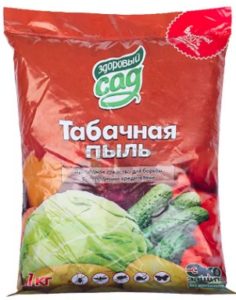
- Infusion of onion peel (from aphids and spider mites).
- Infusion of chamomile officinalis. To prepare the working solution, you need to pour 0.5 kg of dry collection of the plant with 5 liters of boiling water, leave to infuse for at least 12 hours. Grate 40 g of laundry soap into the resulting mixture and add water to 10 liters. Strain and apply to spray the trunk and crown.
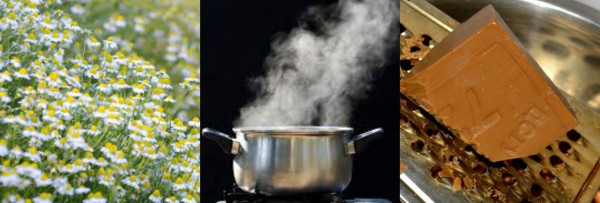
- Hot pepper decoction. Pour dried pepper pods (100 g) with boiling water (1 l) and cook for 2 hours. Insist for two hours, then clean and add water to a total volume of 10 liters. Use for spraying shoots and leaves.
Well, now you know when and how to process cherries and cherries in the spring against diseases and pests. The scheme is shown, all drugs are sounded, and you must choose specific ones yourself. Just do not ignore the timing of spraying, dosage and the frequency of repetition of treatments. Good luck protecting your crops!

